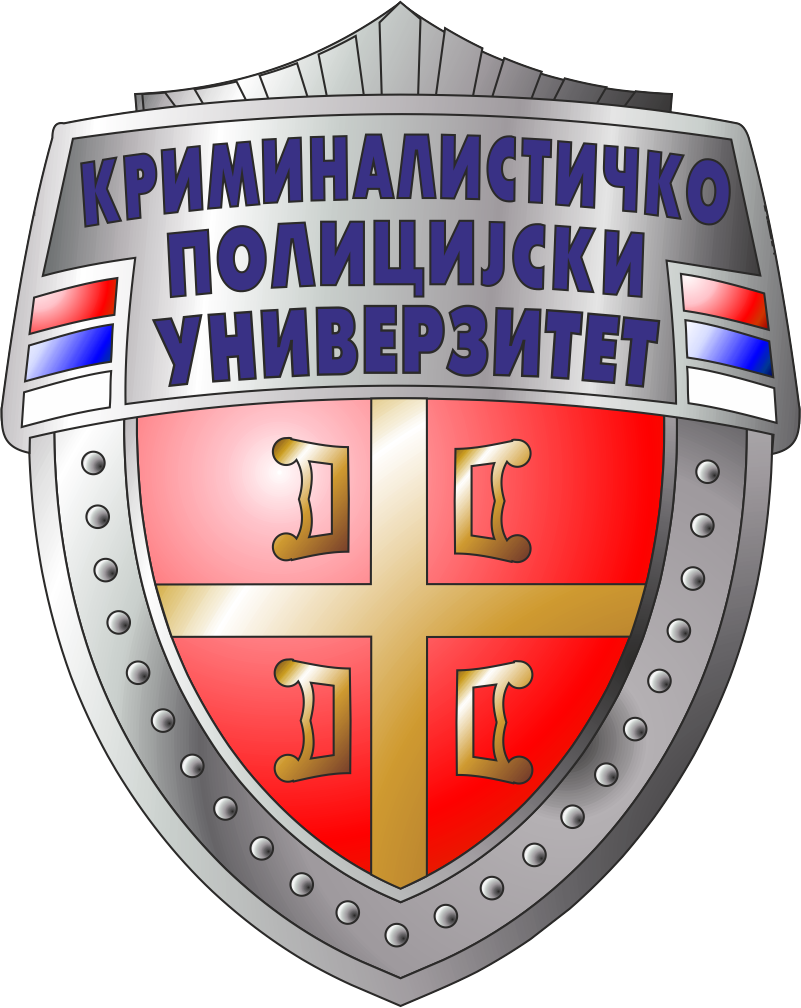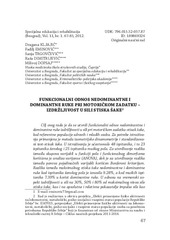Приказ основних података о документу
Functional relationship between dominant and non-dominant hand in motor task - hand grip strength endurance
Funkcionalni odnos nedominantne i dominantne ruke pri motoričkom zadatku - izdržljivost u sili stiska šake
| dc.creator | Kljajić, Dragana | |
| dc.creator | Eminović, Fadilj | |
| dc.creator | Trgovčević, Sanja | |
| dc.creator | Dimitrijević, Raša | |
| dc.creator | Dopsaj, Milivoj | |
| dc.date.accessioned | 2019-03-21T16:01:36Z | |
| dc.date.available | 2019-03-21T16:01:36Z | |
| dc.date.issued | 2012 | |
| dc.identifier.issn | 1452-7367 | |
| dc.identifier.uri | http://jakov.kpu.edu.rs/handle/123456789/475 | |
| dc.description.abstract | The aim of this study was to determine the functional relationship between dominant and non-dominant hand in the strength endurance motor task - hand grip, in the referent population of healthy and young persons. For the purpose of the research we have implemented the method of isometric dynamometry and standardized hand grip test. The study included 48 participants, 23 of them being of female and 25 of male gender. The analysis of variance (ANOVA) was used to determine the difference between the sets of variables in the function of gender and functional dimorphism, while the Bonferroni criterion was applied to determine the differences between pairs of individual variables. The difference between the maximum hand grip of dominant and non-dominant hand in female participants amounted to 9.28%, and in male ones 7.39% in favor of the dominant hand. There is no statistically significant difference between nondominant and dominant hand regarding the force endurance time aspect at 30%, 50% and 80% out of the maximum hand grip level, as well as at the absolute and relative force impulse indicators as an endurance measure. The value of gender dimorphism in relation to the absolute indicators of force momentum at 30%, 50% and 80% out of the maximum hand grip level in female participants is 0.9714, 0.9145, 0.9301, and in male participants 0.9515, 0.8264 and 0.8606. The force momentum indicators value at 30%, 50% and 80% out of the maximum hand grip level in female participants is ImpF30%=21167.58±6923.67 Ns, ImpF50%=10846.94±3800.56 Ns and ImpF80%=5438.46±1993.12 Ns, and in male participants ImpF30%=17734.03±6881.92 Ns, ImpF50%=13903.61±3437.76 Ns and ImpF80%=5117.53±1894.78 Ns. The obtained results can be used as the criteria for further research in special education and rehabilitation, medical and professional rehabilitation. | en |
| dc.description.abstract | Cilj ovog rada je da se utvrdi funkcionalni odnos nedominantne i dominantne ruke izdržljivosti u sili pri motoričkom zadatku-stisak šake, kod referentne populacije zdravih i mladih osoba. Za potrebe istraživanja primenjena je metoda izometrijske dinamometrije i standardizovani test-stisak šake. U istraživanju je učestvovalo 48 ispitanika, i to 23 ispitanika ženskog i 25 ispitanika muškog pola. Za utvrđivanje razlika između skupova varijabli u funkciji pola i funkcionalnog dimorfizma korišćena je analiza varijanse (ANOVA), dok je za utvrđivanje razlika između parova pojedinačnih varijabli korišćen Bonferoni kriterijum. Razlika između maksimalnog stiska šake nedominantne i dominantne ruke kod ispitanika ženskog pola je iznosila 9.28%, a kod muških ispitanika 7.39% u korist dominantne ruke. U odnosu na vremenski aspekt izdržljivosti u sili na 30%, 50% i 80% od maksimalnog nivoa sile stiska šake, kao i na apsolutne i relativne pokazatelje impulsa sile kaomere izdržljivosti, ne postoji statistički značajna razlika između nedominantne i dominantne ruke. Vrednost funkcionalnog dimorfizma u odnosu na apsolutne pokazatelje impulsa sile na 30%, 50% i 80% od maksimalnog nivoa stiska šake za ispitanike ženskog pola iznosi 0.9714, 0.9145, 0.9301, a za ispitanike muškog pola iznosi 0.9515., 0.8264 i 0.8606. Vrednost apsolutnih pokazatelja impulsa sile na 30%, 50% i 80% od maksimalnog nivoa sile stiska šake kod ispitanika ženskog pola iznosi ImpF30%=21167.58±6923.67 Ns, ImpF50%=10846.94±3800.56 Ns i ImpF80%=5438.46±1993.12 Ns, a kod ispitanika muškog pola ImpF30%=17734.03±6881.92 Ns, ImpF50%=13903.61±3437.76 Ns i ImpF80%=5117.53±1894.78 Ns. Dobijeni rezultati se mogu koristiti kao kriterijumi za dalja istraživanja u specijalnoj edukaciji i rehabilitaciji, medicinskoj i profesionalnoj rehabilitaciji. | sr |
| dc.publisher | Fakultet za specijalnu edukaciju i rehabilitaciju, Beograd | |
| dc.relation | info:eu-repo/grantAgreement/MESTD/Integrated and Interdisciplinary Research (IIR or III)/47015/RS// | |
| dc.rights | openAccess | |
| dc.rights.uri | https://creativecommons.org/licenses/by-sa/4.0/ | |
| dc.source | Specijalna edukacija i rehabilitacija | |
| dc.subject | functional dimorphism | en |
| dc.subject | dominant hand | en |
| dc.subject | nondominant hand | en |
| dc.subject | force endurance | en |
| dc.subject | funkcionalni dimorfizam | sr |
| dc.subject | dominantna ruka | sr |
| dc.subject | nedominantna ruka | sr |
| dc.subject | izdržljivost u sili | sr |
| dc.title | Functional relationship between dominant and non-dominant hand in motor task - hand grip strength endurance | en |
| dc.title | Funkcionalni odnos nedominantne i dominantne ruke pri motoričkom zadatku - izdržljivost u sili stiska šake | sr |
| dc.type | article | |
| dc.rights.license | BY-SA | |
| dcterms.abstract | Трговчевић, Сања; Допсај, Миливој; Димитријевић, Раша; Кљајић, Драгана; Еминовић, Фадиљ; Функционални однос недоминантне и доминантне руке при моторичком задатку - издржљивост у сили стиска шаке; Функционални однос недоминантне и доминантне руке при моторичком задатку - издржљивост у сили стиска шаке; | |
| dc.citation.volume | 11 | |
| dc.citation.issue | 1 | |
| dc.citation.spage | 67 | |
| dc.citation.epage | 85 | |
| dc.citation.other | 11(1): 67-85 | |
| dc.citation.rank | M51 | |
| dc.identifier.doi | 10.5937/specedreh1201067K | |
| dc.identifier.fulltext | http://jakov.kpu.edu.rs/bitstream/id/2609/473.pdf | |
| dc.type.version | publishedVersion |


